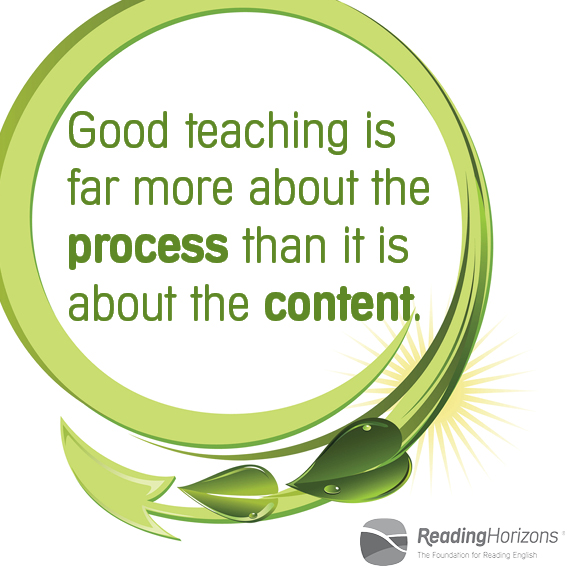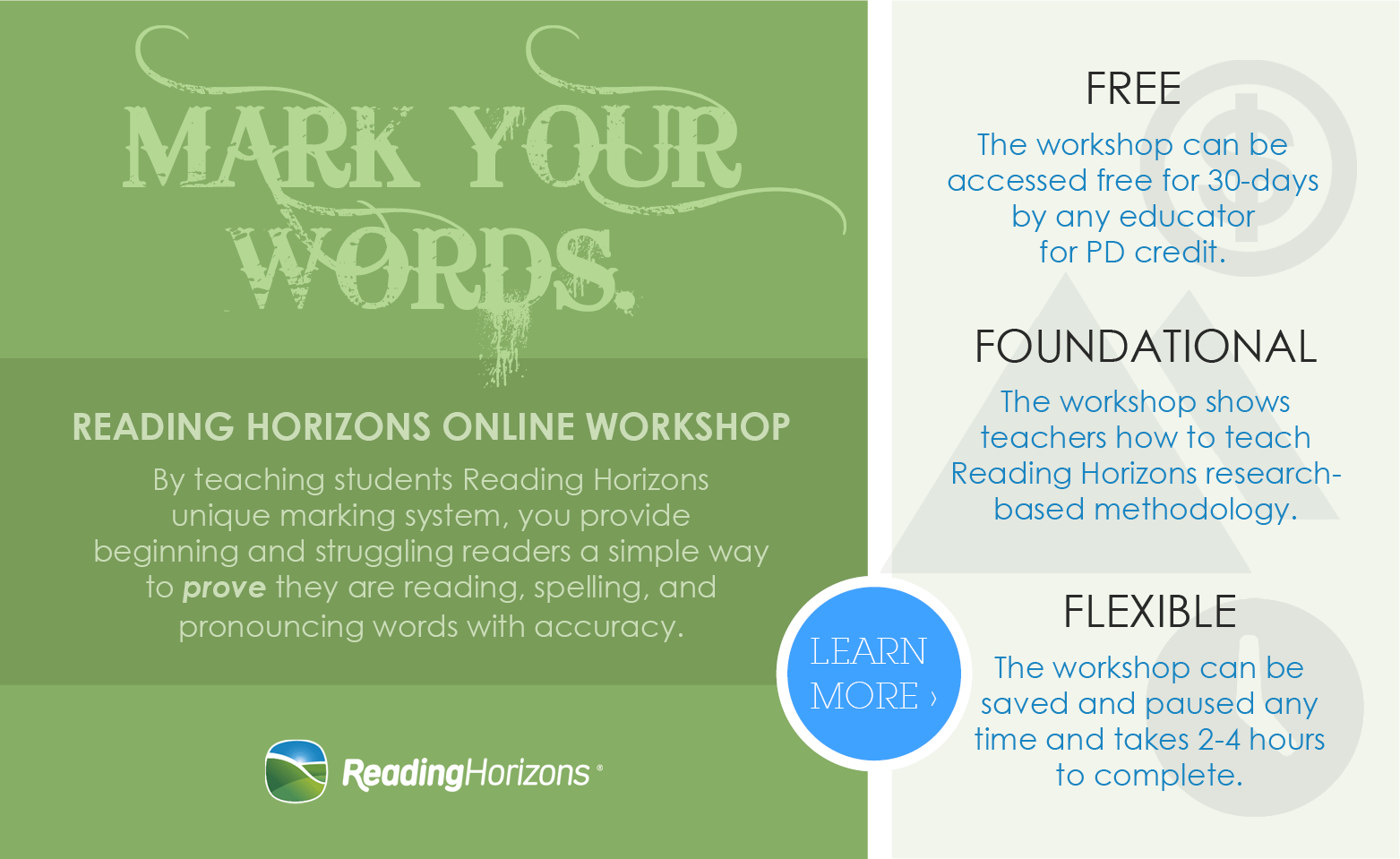Dramatically Improve Spelling & Vocabulary Test Performance With A Simple Process
 Every teacher wants their students to succeed. Not one teacher out there hopes that their students will perform poorly. So… if there was a simple, easy to implement
Every teacher wants their students to succeed. Not one teacher out there hopes that their students will perform poorly. So… if there was a simple, easy to implement
Well, here is Shantell Berrett, Reading Horizons Teacher Trainer
This video will show you how to tweak the way you present information to maximize student performance - especially the performance of struggling readers. The best part? It's so easy to implement:
How to implement this simple and powerful process of dictation:
 Step 1: You (as the teacher or tutor) say the word twice (this can be a word you are having the student
Step 1: You (as the teacher or tutor) say the word twice (this can be a word you are having the student
Step 2: Have the students say the word back twice.
Step 3: Have the students write the word once.
Step 4: Have the students read the word once (by having them mark the word, decode it, and then read it).
Results:
Here are the results of one teacher that was trained by Jay Kelly (as mentioned in the video), after using this process for just 2 weeks:
- 25 students in her mainstream
6th grade class. - 18 mainstream.
- 7 receive special services.
- Normally about 50% (12-13) of students pass the vocabulary tests.
- The only thing she did differently
in this case was to introduce the words using dictation and give the test using dictation. - This time 96% (24/25) passed.
- All 7 special services students passed.
- The only student who didn't pass refused to say the words back.
The only student who didn't pass refused to participate in the process.
How’s that for powerful results? From 50% passing rate to 96%! And the only student who didn’t pass refused to participate.
We'd love to hear the results of any teacher that tries this strategy!!
4 Comments

Kimberley said
I used a program that came out of the UK called Alpha to Omega to work with students who were recommended for extra language help (either reading/writing)... their focus was on introducing letter sounds in a systematic way, also making the alphabetic principle an important element of the program, so students were required to use small wooden letters (we didn't have any, so they wrote them onto small cards and had them keep them in alphabetic order. The rest of the program involved dictating words in family groupings, students would repeat, make with the letters, repeat, write in their book, & repeat. Once there were enough letters and words to make sentences, teacher dictated sentences following the same process. We saw some amazing results, especially with one particularly challenged LD student, I used this with a number of different ages, tailoring it to each group of students--speed at which these sounds/word families were presented. Most (12/14), if not all of the students went up at least one reading level based on the pre and post reading measures we took on all students. The other two went up two reading levels. I cannot remember the name of the literacy measure the entire school used, a private school, where there were a number students with ASD or were on the spectrum at some level. I saw some great attitude changes in students who felt a stronger control over their knowledge of the letter sound process, as well. One of the aspects that I loved about the dictation, was that their working memory was stretched by the process. The idea was to dictate, not write anything on the board, and gradually, as the sentences got longer and more complex, students were able to write without asking for more repeats by the teacher. When I use this program again, I will keep track of the number of times that students ask for me to repeat the sentence to measure the decrease in those requests divided by the number of words per sentence. I think this would be a good measure to show an increase in the students' working memory. I would recommend this type of dictation and repetition for any vocabulary or letter sound knowledge instruction. Good luck.

Dave Webb said
Good article. Definitely considering this for my 1st year students in the new academic year, starting next month. Will report back with my findings :)

Marsha Jackson said
When using this method for vocabulary instruction, is there a process for including the definition of the word?

Shantell Berrett said
Hi Marsha. Usually during the instruction the teacher will dictate the word to the students (following the process as outlined), and then as the students write the word, the teacher uses the word in a sentence and talks about the meaning of the word. Teachers can have students discuss the word with a partner and come up with their own sentence to demonstrate an understanding of the meaning and usage of the word. Teachers can also dictate a sentence using the word, have students repeat and then write the full sentence. You can really design this to fit whatever works best for you and your students.
